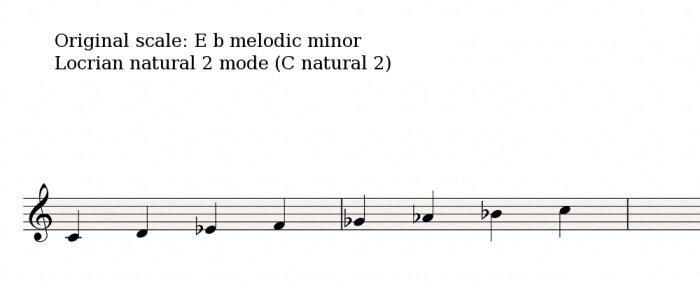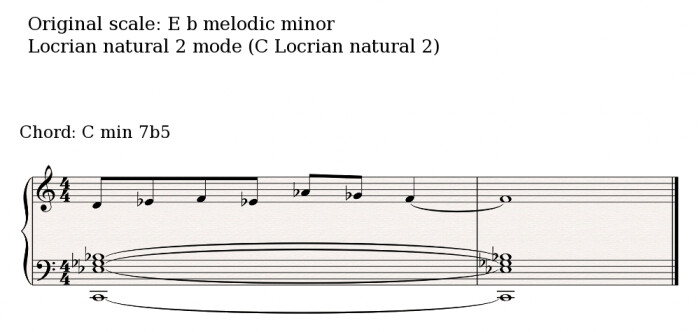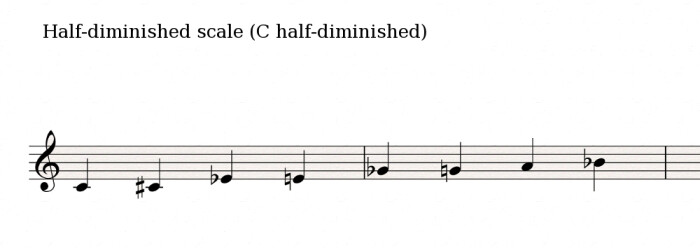You might be wondering why I'm writing about these scales as a "particular case" even though I hadn't mentioned them when talking about the altered and Bartok scales. Well, these two scales often lead to a quite legitimate confusion so I decided to straighten things up and write an article to clarify things before moving forward. Even if that means straying a bit from the subject of altered modes to briefly explain what the diminished scale is, since it is not an altered mode.

Let’s begin with the half-diminished scale.
The half-diminished scale
The half-diminished scale is the sixth mode of the melodic minor scale, the one we called Locrian natural 2 mode in article 56. Here’s an example, in case you don’t recall it:

In the previous article dealing with the Bartok scale I said it worked pretty well for improvisations around 7 and 7b5 chords. Well, the Locrian natural 2 mode is particularly well adapted for improvisations around minor 7b5 chords, as you can see here:

This is quite logical when you think of it, considering it includes the root, the minor third, the diminished fifth, and the minor seventh of this type of chords. On the other hand, in the absence of the perfect fifth, it’s completely useless with “normal” minor 7 chords.
The diminished scale
The diminished scale, also known as octatonic or symmetric diminished scale, doesn’t differ much from the half-diminished one, as you will see in a moment:

As I mentioned above, it’s not an altered mode, even if it is very similar to the altered scale (see article 57). In this scale, the notes ascend in alternating intervals of a whole step and a half step, and there is no other interval. Strictly speaking it’s not a diatonic scale, but we’ll come back to these structures later on. It has eight notes instead of seven, which is much more common.
Regarding its use, it doesn’t differ much from the half-diminished scale, which unfortunately doesn’t help dissipating the confusion between the two of them. In the example below it is used on top of the same chord as in the example for the Locrian natural 2 mode:





